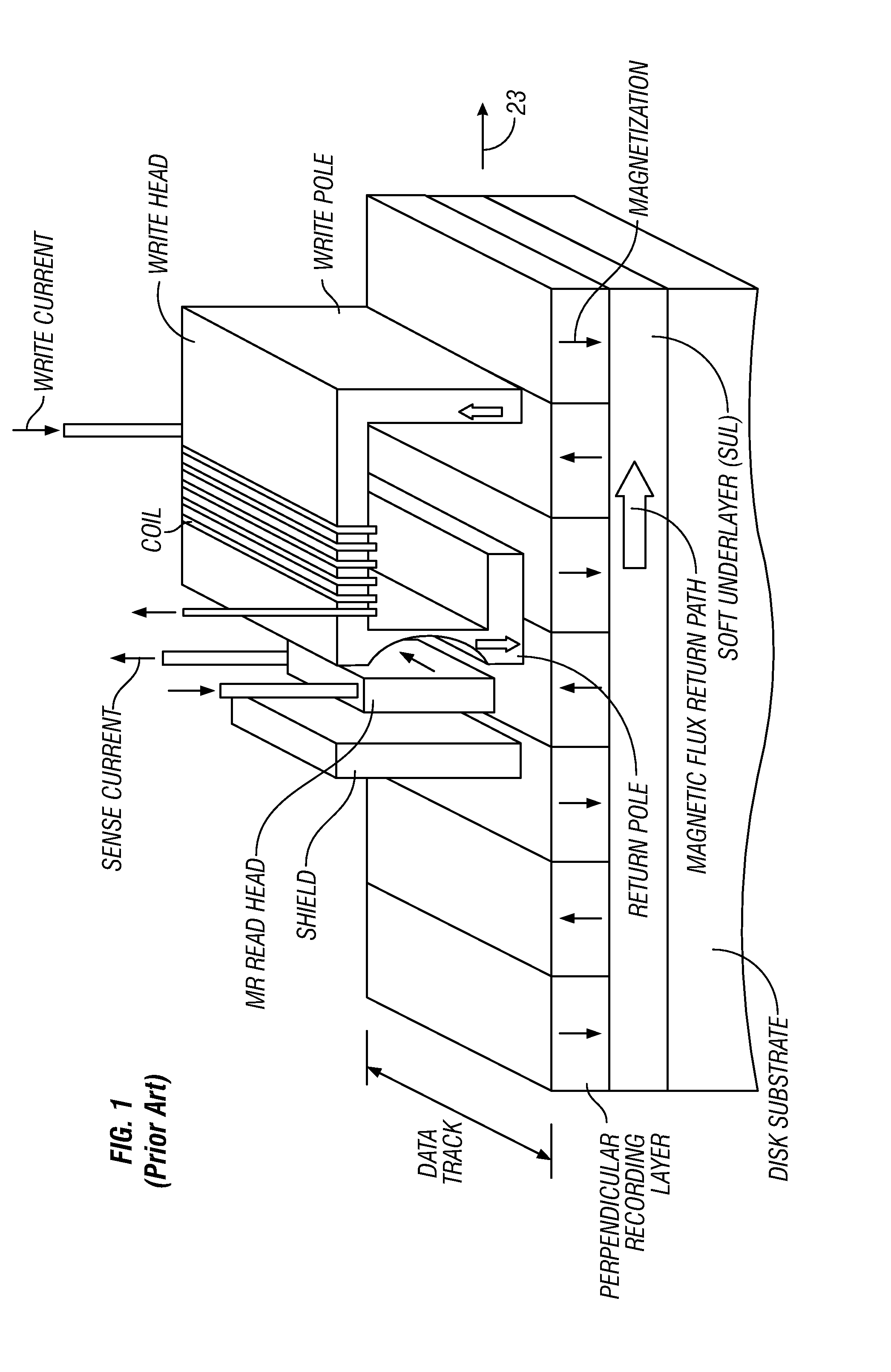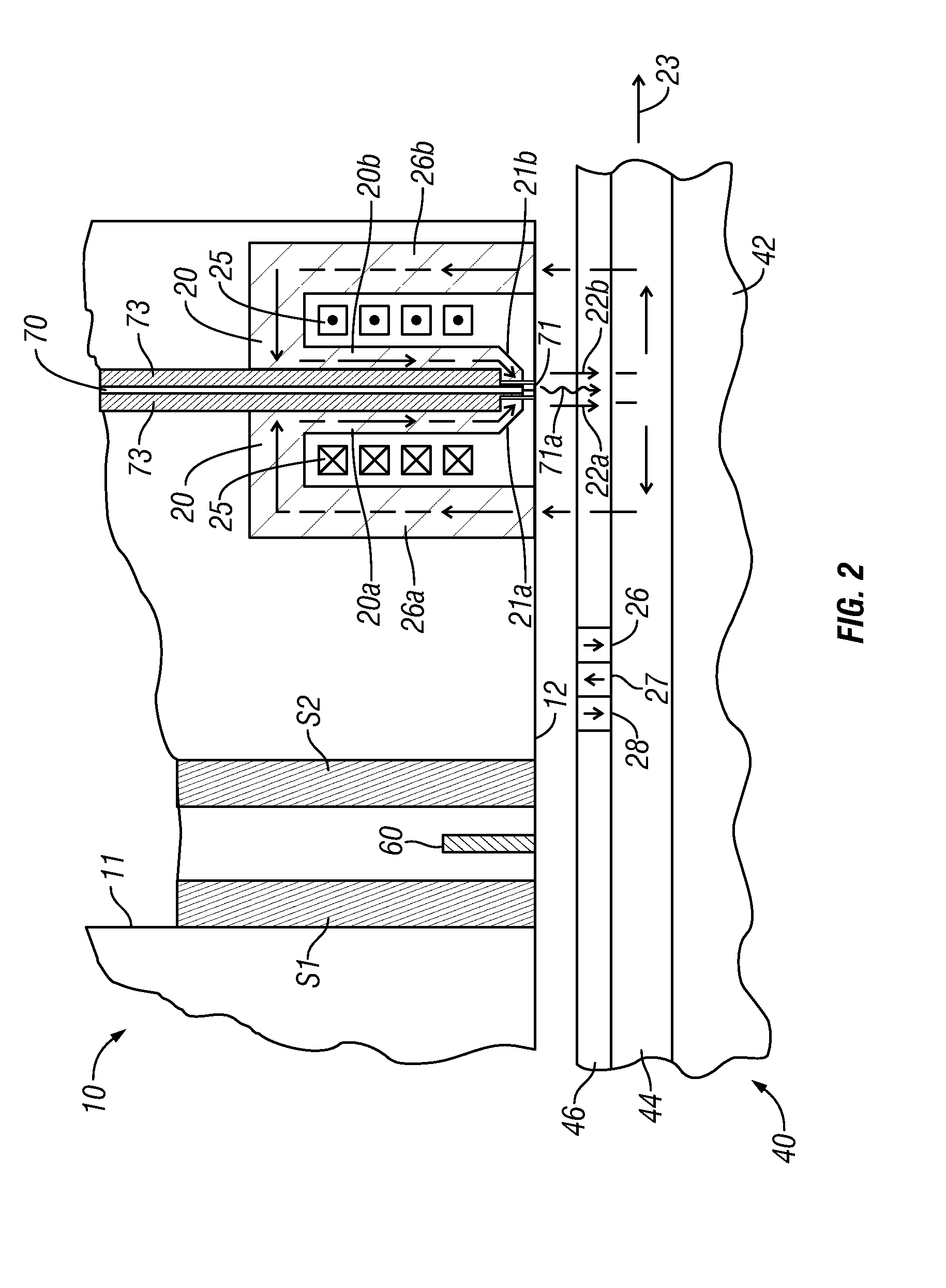Thermally-assisted perpendicular magnetic recording system with write pole surrounding an optical channel and having recessed pole tip
a magnetic recording and perpendicular technology, applied in the field of thermo-assisted magnetic recording system, can solve the problems of inability to exceed the write field capability of the recording head, data loss may occur, and adjacent-track interference (ati), so as to prevent accidental erasure of adjacent tracks and minimize optical power loss
- Summary
- Abstract
- Description
- Claims
- Application Information
AI Technical Summary
Benefits of technology
Problems solved by technology
Method used
Image
Examples
Embodiment Construction
[0021]FIG. 2 is a sectional view through a portion of the head carrier and associated perpendicular magnetic recording medium according to one implementation of this invention. The recording medium, i.e., disk 40, includes a substrate 42, the SUL 44, and a perpendicular magnetic recording layer 46. The SUL 44 may be any alloy material suitable as the magnetically-permeable flux-return path, such as NiFe, FeAlSi, FeTaN, FeN, CoFeB and CoZrNb. The recording layer 46 may be any media with perpendicular magnetic anisotropy, such as a cobalt-chromium (CoCr) alloy granular layer grown on a special growth-enhancing sublayer, or a multilayer of alternating films of Co with films of platinum (Pt) or palladium (Pd). The recording layer 46 may also be an L10 ordered alloy such as FePt or FeNiPt. The disk 40 would also typically include a protective overcoat (not shown) over the recording layer 46.
[0022]The head carrier 10 has a trailing surface 11 and a recording-layer-facing surface 12 orient...
PUM
| Property | Measurement | Unit |
|---|---|---|
| taper angle | aaaaa | aaaaa |
| diameter | aaaaa | aaaaa |
| diameter | aaaaa | aaaaa |
Abstract
Description
Claims
Application Information
 Login to View More
Login to View More - R&D
- Intellectual Property
- Life Sciences
- Materials
- Tech Scout
- Unparalleled Data Quality
- Higher Quality Content
- 60% Fewer Hallucinations
Browse by: Latest US Patents, China's latest patents, Technical Efficacy Thesaurus, Application Domain, Technology Topic, Popular Technical Reports.
© 2025 PatSnap. All rights reserved.Legal|Privacy policy|Modern Slavery Act Transparency Statement|Sitemap|About US| Contact US: help@patsnap.com



